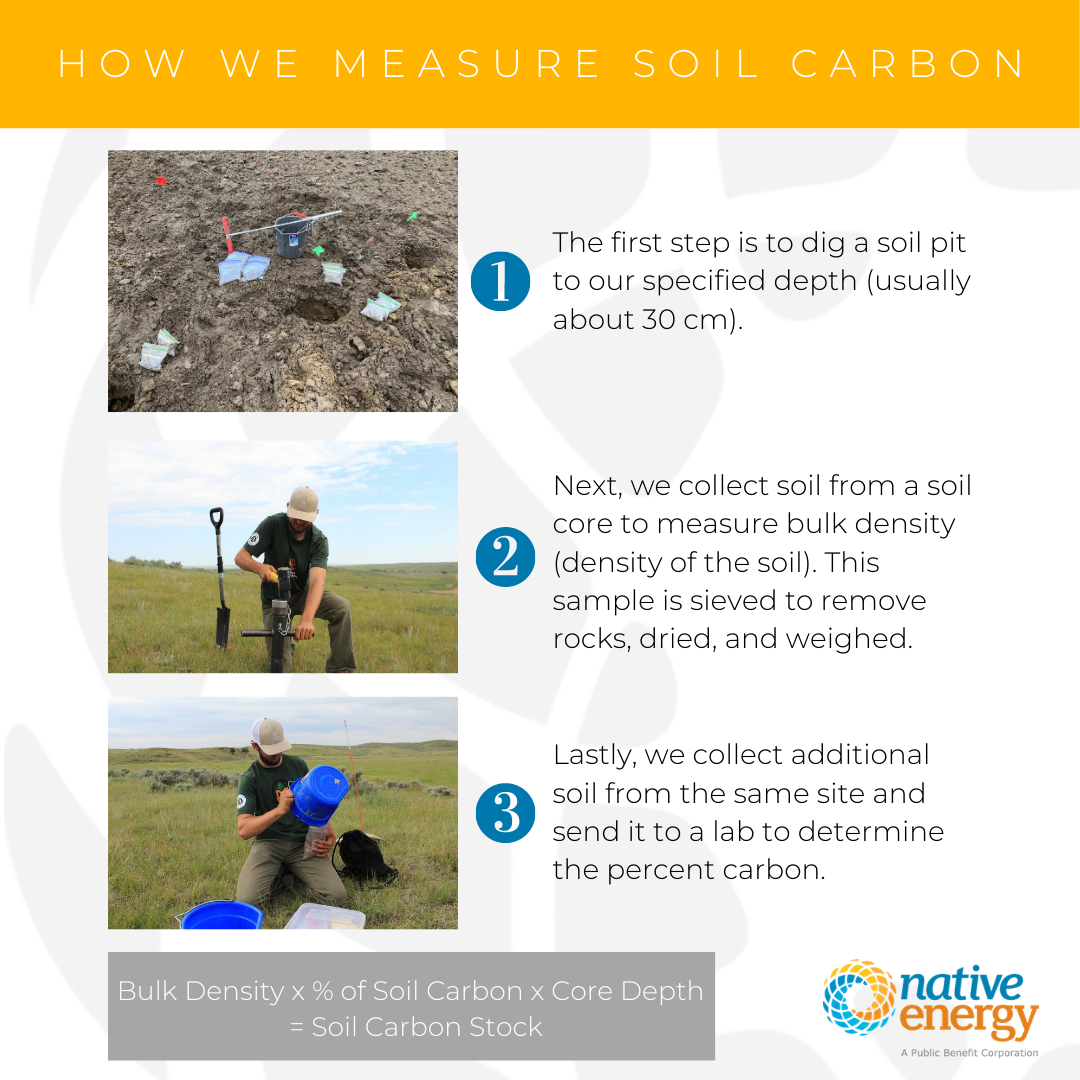Building soil carbon by adopting regenerative agricultural practices like no-till cropping and rotational grazing is increasingly viewed as both an important way to combat climate change and as an exciting way for businesses to address their own carbon footprints. To support this effort, Native is developing several projects that support agricultural producers to adopt regenerative practices that will sequester carbon on their lands. In every case, we develop these projects to demonstrate that real, measurable change is occurring and meet standards published by third-party organizations like the Verified Carbon Standard and the Climate Action Reserve. Our soil carbon projects collect data from each participating farm or ranch to conclusively show how much carbon has been added to the soil as a result of the project. So how exactly do we do this? The answer quite literally involves going out in the field and getting dirty!
We collect soil samples from each participating farm or ranch, which tell us how much carbon is stored in the soil at the property in question. Each soil sample consists of a soil core that we dig up and send to a lab where it is analyzed for two key factors: soil percent organic carbon (SOC) and soil bulk density (BD). Using these data, along with the depth of the soil core, we can calculate the total mass of soil carbon using the following formula:
SOC (%) x BD (g/cm3) x depth (cm) x 100 (conversion factor) = SOC mass (tonnes / hectare)
 The final unit of this calculation, tonnes of soil organic carbon per hectare, is the unit most relevant to farmers working to improve their soil health. Higher SOC leads to more productive soils that require fewer inputs of fertilizer and water. For the carbon market, however, tonnes of SOC is multiplied by 3.66 to yield tonnes of CO2-equivalent, which represents how much carbon dioxide has been removed from the atmosphere and stored in the soil.
The final unit of this calculation, tonnes of soil organic carbon per hectare, is the unit most relevant to farmers working to improve their soil health. Higher SOC leads to more productive soils that require fewer inputs of fertilizer and water. For the carbon market, however, tonnes of SOC is multiplied by 3.66 to yield tonnes of CO2-equivalent, which represents how much carbon dioxide has been removed from the atmosphere and stored in the soil.
Of course, one soil core is not likely to be representative of soil carbon across an entire farm or ranch, and this is a point we take very seriously. It requires we collect multiple soil samples to determine an average soil carbon mass with an acceptable level of uncertainty. Depending on the number of soil types present on a property, we can take anywhere from 20 to 100 samples per farm or ranch!
By sampling soil at the start of a project, we establish a baseline soil carbon level. Again, this is both essential to any credible carbon project and is required by third-party standards. From there, we use a variety of scientific models to project how much additional carbon will be sequestered in the soil as a result of the project activity (i.e., the adoption or expansion of no-till cropping, rotational grazing, and other actions). While these models give us high confidence in how much soil carbon a project will store, we ultimately will return to a given farm or ranch several years into a project to collect new soil samples from the same sites as the original baseline sampling. By doing this, we end up with an empirical measure of soil carbon mass across a farm/ranch at two points in time, allowing us to accurately calculate the carbon that’s been added to the soil thanks to the project and all of its supporters.
This translates into robust, validated, third-party verified carbon credits that companies supporting the project can count toward Science-Based Targets or other climate goals.

